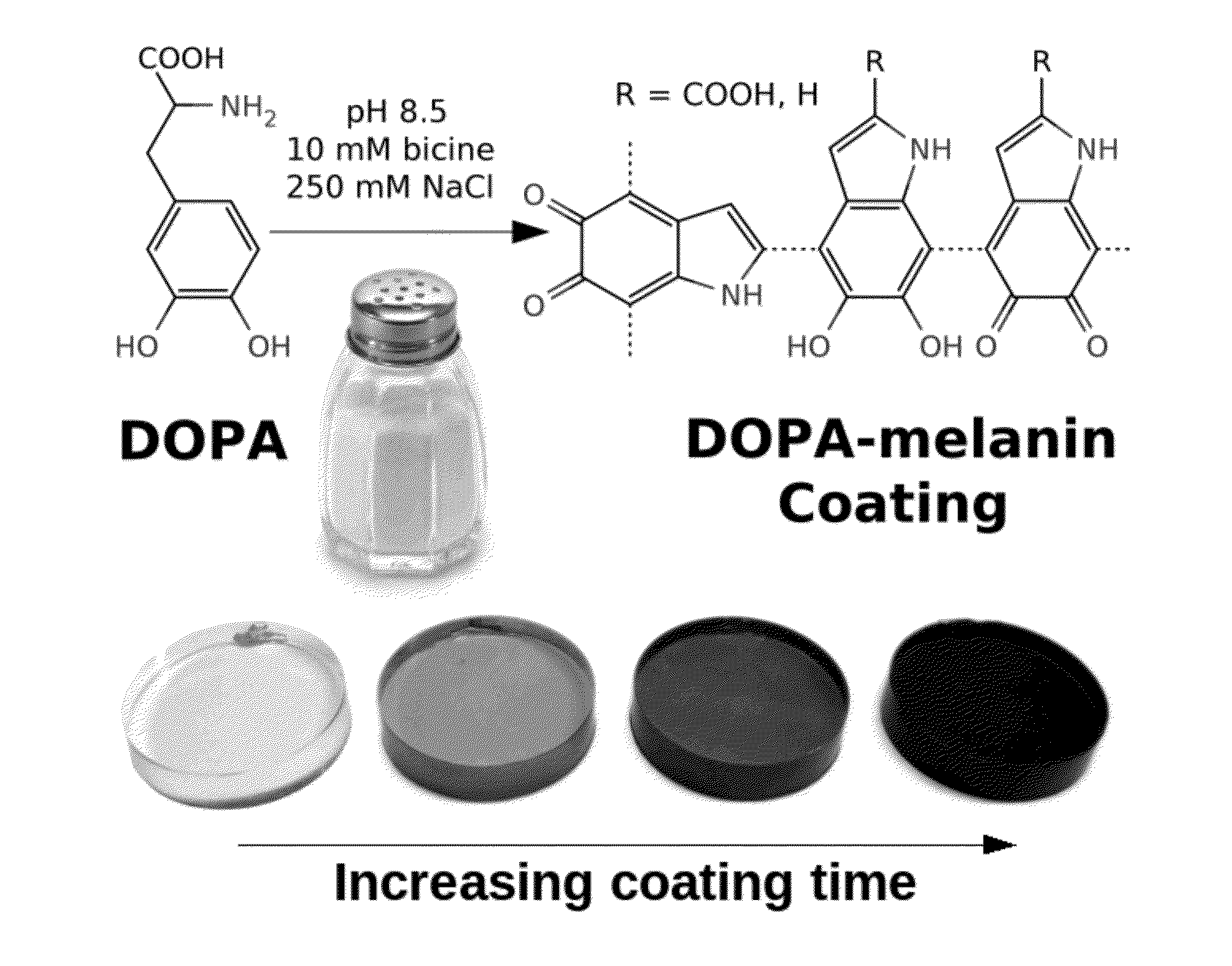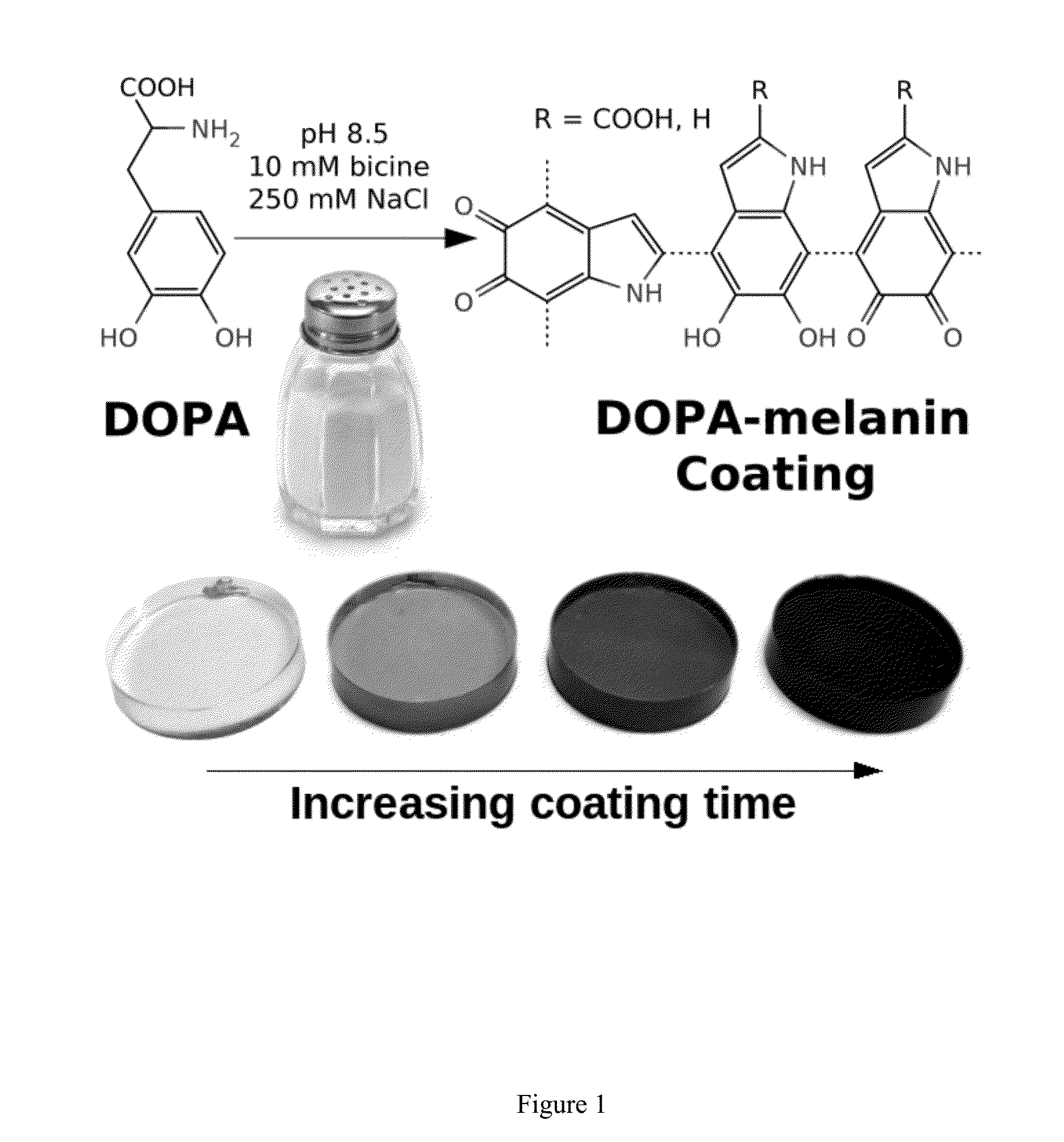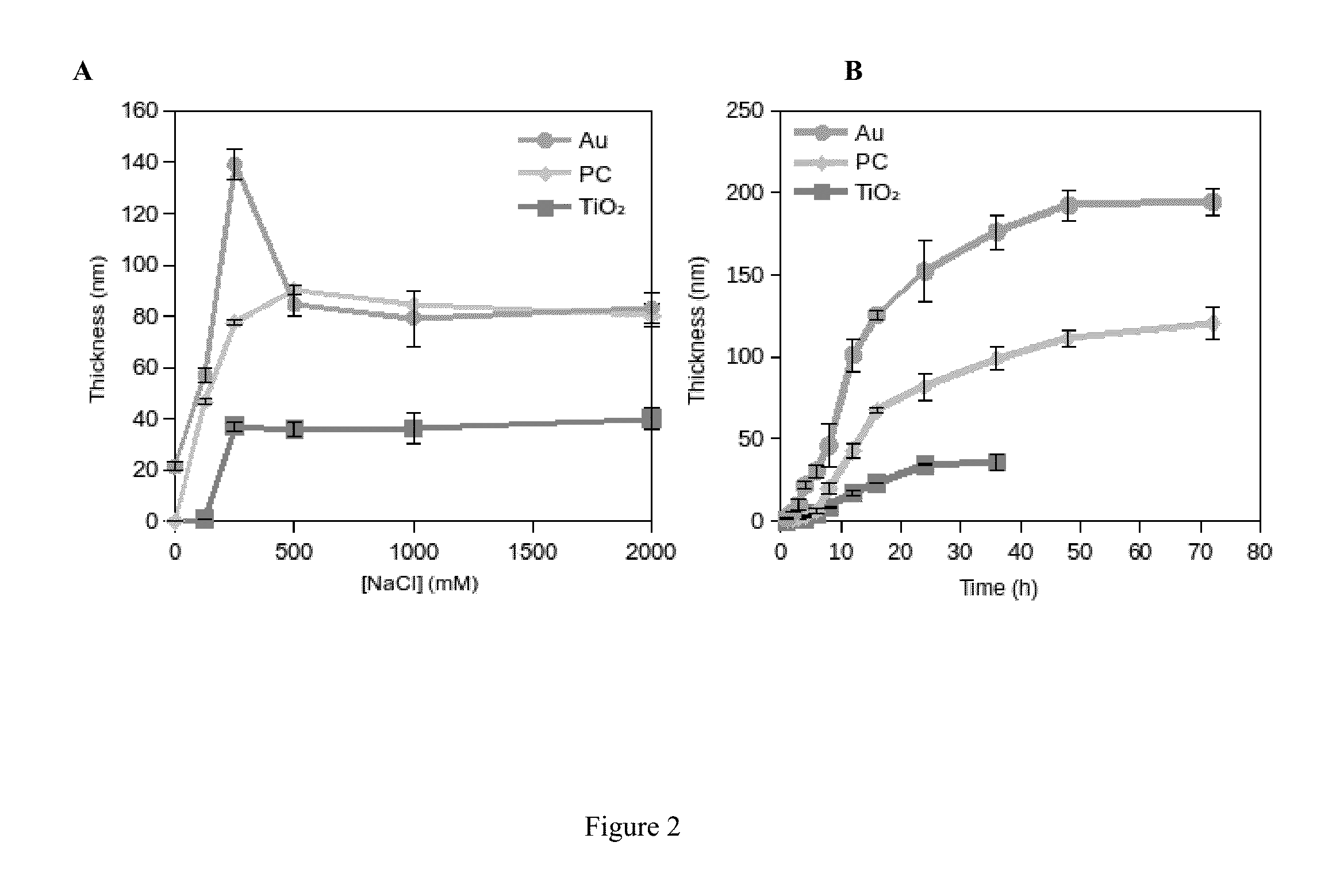Dopa-melanin formation in high ionic strength solutions
a technology of ionic strength and solution, applied in the field of polymer particles and coatings, can solve the problems of considerably more difficult growth of dm films on substrates, and achieve the effect of high binding capacity and high ionic strength alkalin
- Summary
- Abstract
- Description
- Claims
- Application Information
AI Technical Summary
Benefits of technology
Problems solved by technology
Method used
Image
Examples
example 1
High Ionic Strength Formation of DOPA-Melanin Coating for Loading and Release of Antimicrobial Compounds
[0096]Conformal DOPA-melanin films were formed on a variety of substrates by simple dip-coating in an alkaline DOPA solution at high ionic strength (FIG. 1). Compared to polydopamine, DOPA-melanin coatings have the advantage of high hydrophilicity and also the ability to bind and release cations. We demonstrate the latter by using DOPA-melanin coated polycarbonate to form an antibacterial surface that inhibits and kills S. aureus.
[0097]Melanins are widespread in nature, providing pigmentation, photoprotection, anti-oxidant, metal binding and other biological properties.[1] An important subclass of melanins is eumelanin, which forms from tyrosine through a pathway involving 3,4-dihydroxyphenylalanine (DOPA) oxidation, intramolecular cyclization, oligomerization, and aggregation to form an insoluble and heterogeneous solid.[2,3] Research on eumelanins is in part motivated by an int...
example 2
High Ionic Strength Formation of DHICA-Rich DOPA-Melanin Particles for Toxic Heavy Metal Removal
[0125]In this Example, we investigate the formation of insoluble DM particles using high ionic strength buffers, apply them for heavy metal binding, and compare their binding performance with AC, PDA particles and other forms of melanin. We show that the type and concentration of salt used in the polymerization solution has a significant effect on the ratio of the DHICA to DHI subunits of the DM, which correlates with the ability of the DM to bind heavy metals.
[0126]Heavy metal contamination of drinking water in both developing and developed countries is a major concern. In particular, lead contamination is a serious issue due to its toxic effects on children and unborn fetuses. Eumelanin, the ubiquitous biological pigment, has been noted for its high binding affinity with heavy metal ions. However, synthetic eumelanin has not been utilized as an agent for heavy metal ion removal, in part...
example 3
Facile Preparation of DHICA-Enriched DOPA-Melanin for Heavy Metal Capture
[0167]In this example, we investigate the formation of insoluble DM particles using high ionic strength buffers, apply them for heavy metal capture, and compare their performance with AC, PDA particles and other forms of melanin. We show that the type and concentration of salt used in the polymerization solution has a significant effect on the ratio of the DHICA to DHI subunits of the DM, which in turn correlates with the ability of the DM to bind heavy metals.
[0168]Common methods for removal of high concentrations of heavy metals from water include chemical precipitation, membrane filtration, ion-exchange resins, oxidation-reduction and solvent extraction.[9] However, these methods are often insufficient to reduce heavy metal concentration below strict regulatory requirements.[10] For removal of trace heavy metal ions, adsorbent-based technologies such as activated carbon, chitosan, zeolites and clays have bee...
PUM
| Property | Measurement | Unit |
|---|---|---|
| Thickness | aaaaa | aaaaa |
| Molar density | aaaaa | aaaaa |
| Molar density | aaaaa | aaaaa |
Abstract
Description
Claims
Application Information
 Login to View More
Login to View More - R&D
- Intellectual Property
- Life Sciences
- Materials
- Tech Scout
- Unparalleled Data Quality
- Higher Quality Content
- 60% Fewer Hallucinations
Browse by: Latest US Patents, China's latest patents, Technical Efficacy Thesaurus, Application Domain, Technology Topic, Popular Technical Reports.
© 2025 PatSnap. All rights reserved.Legal|Privacy policy|Modern Slavery Act Transparency Statement|Sitemap|About US| Contact US: help@patsnap.com



